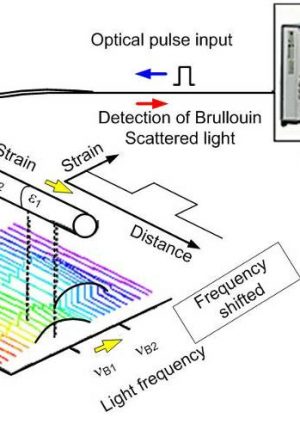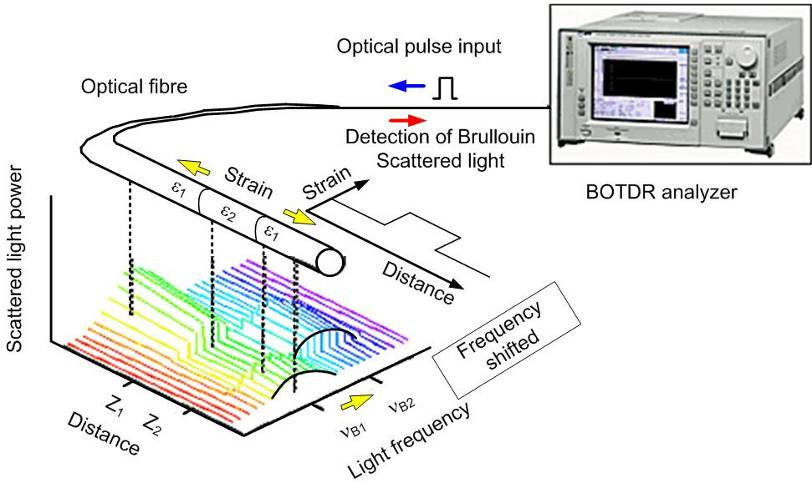The Importance of an Optical Fibre Diameter Analyser in R&D
The Importance of an Optical Fibre Diameter Analyser in R&D
Blog Article
Optimize Your Fiber Optic Efficiency: Recognizing Optical Fibre Size Analyser Modern Technology
The efficiency of fiber optic systems is critically affected by the accuracy of their diameter, a factor often overlooked in the quest of optimum signal integrity. Recognizing the technology behind optical fiber size analysers exposes the complex equilibrium in between dimension precision and manufacturing top quality. These gadgets not only boost compliance with market criteria but likewise provide real-time insights that can preemptively address prospective issues. The ramifications of their usage prolong beyond simple measurement; they can fundamentally change the landscape of fiber optic effectiveness. What elements should one take into consideration to harness their full capacity?
Value of Optical Fiber Size
The diameter of optical fibre plays a vital function in figuring out the efficiency and efficiency of communication systems. It influences a number of crucial criteria, including the setting of light proliferation, depletion, and bandwidth capability. Larger sizes generally permit multiple light modes, assisting in greater data transmission prices. Conversely, smaller sized diameters often tend to support less modes, which can boost signal clearness and lower crosstalk.

Moreover, comprehending the diameter's implications can lead to set you back financial savings by lowering the demand for signal amplification and repeaters in considerable networks (optical fibre diameter analyser). Finally, the value of optical fiber diameter can not be overstated, as it directly affects the overall efficiency and integrity of contemporary interaction systems

Exactly How Diameter Affects Signal Quality
Signal top quality in optical fiber systems pivots dramatically on the diameter of the fibre. A smaller sized diameter can lead to higher attenuation prices, resulting in signal loss as light trips via the fibre.
Conversely, larger sizes usually enable improved light capture and decreased modal diffusion, boosting signal clearness. In multimode fibres, a larger core diameter can support several light settings, however it may additionally present intermodal dispersion, which can weaken signal high quality. Selecting the optimal fiber diameter is essential for attaining the wanted performance in details applications.
Furthermore, the interaction between the fiber size and the wavelength of the light used plays an important function in establishing the reliable transmission distance and total signal integrity. Recognizing just how fibre size affects signal top quality is vital for network designers and designers striving to enhance optical fiber systems for reputable, high-speed information transmission.
Review of Diameter Analyser Modern Technology
In several optical fiber manufacturing procedures, exact measurement of fibre diameter is essential for making certain consistent performance and top quality (optical fibre diameter analyser). Size analysers are advanced tools created to evaluate the physical dimensions of optical fibers with high precision. They use advanced optical and laser innovations to determine the diameter, ovality, and concentricity of the fibre, hence giving vital data for top quality control
These analysers can operate in-line throughout the manufacturing process or as part of off-line testing procedures. In-line systems enable real-time surveillance, enabling manufacturers to change criteria instantly, thereby keeping ideal production conditions. Off-line analysers, on the various other hand, give detailed analyses of sets, making sure that any kind of variances from defined tolerances are determined and addressed.
Diameter analysers significantly add to the decrease of problems in optical fibres, enhancing total product dependability. By regularly gauging crucial parameters, these innovations assist in compliance with industry criteria and specifications. As the demand for high-performance optical fibres continues to rise, the role of size analysers becomes progressively important in accomplishing the preferred high quality and efficiency standards in fiber optic systems.
Trick Attributes of Fibre Size Analysers
Although different models of fibre size analysers exist, they frequently share a number of key attributes that boost their capability and important site reliability. Among the most considerable features is high-resolution measurement capacities, which make certain precise diameter readings, important for maintaining quality assurance in fibre production. Furthermore, many analysers include innovative optical sensing units created to find minute variants in fibre size, thus providing indispensable data for procedure optimization.
An additional crucial function is real-time tracking, allowing operators to receive instant responses on fiber diameter throughout the production procedure (optical fibre diameter analyser). This capacity assists in fast changes and lowers the likelihood of defects. Lots of analysers also come geared up with easy to use user interfaces, allowing drivers to conveniently navigate via information and settings results
Additionally, durable information storage space and analysis performances are vital for tracking historical performance patterns and making sure conformity with market criteria. Some models even use connection options for assimilation into existing manufacturing control systems, enhancing overall operational efficiency. Portable and compact designs enable for flexible deployment within production environments, guaranteeing that high quality guarantee processes are seamless and reliable. These features jointly contribute to the efficiency of fiber diameter analysers in enhancing fibre optic performance.
Best Practices for Fiber Optimization

First, routine calibration of optical fibre diameter analysers is vital. This makes certain exact measurements and decreases possible disparities that could influence efficiency. Next off, keeping a tidy workplace is essential; dirt and contaminants can bring about signal deterioration.
Additionally, it is very important to choose fibers that satisfy specific application demands. This entails assessing aspects such as attenuation, bandwidth, and ecological problems. Correct installation methods need to additionally be adhered to, including avoiding sharp bends and too much stress, which can compromise fiber stability.
Furthermore, using advanced monitoring systems can promote real-time efficiency analyses, enabling timely recognition of issues. Routine screening and maintenance ought to be carried out to ensure that fibers stay within ideal operational specifications.
Lastly, address training employees on the most current fibre optimization modern technologies and methods will improve their capacity to apply reliable strategies. By adhering to these best methods, organizations can significantly enhance the efficiency and lifespan of their optical fiber systems, ensuring efficient interaction and data transfer.
Final Thought
In verdict, the assimilation of optical fiber size analyser modern technology is critical for making best use of fibre optic efficiency. By making certain exact dimensions of fiber dimensions, these analysers substantially enhance signal high quality and minimize losses throughout data transmission.
Signal high quality in optical fibre systems hinges dramatically on the diameter of the fibre.In numerous optical fibre manufacturing processes, accurate measurement of fiber size is essential for guaranteeing consistent performance and quality. As the need for high-performance optical fibres continues to rise, the duty of diameter analysers ends up being significantly vital in achieving the desired quality and performance standards in fibre optic systems.
These functions jointly add to the effectiveness of fiber size analysers in enhancing fibre optic performance.
In final thought, the assimilation of optical fiber try this website size analyser modern technology is important for maximizing fiber optic efficiency.
Report this page